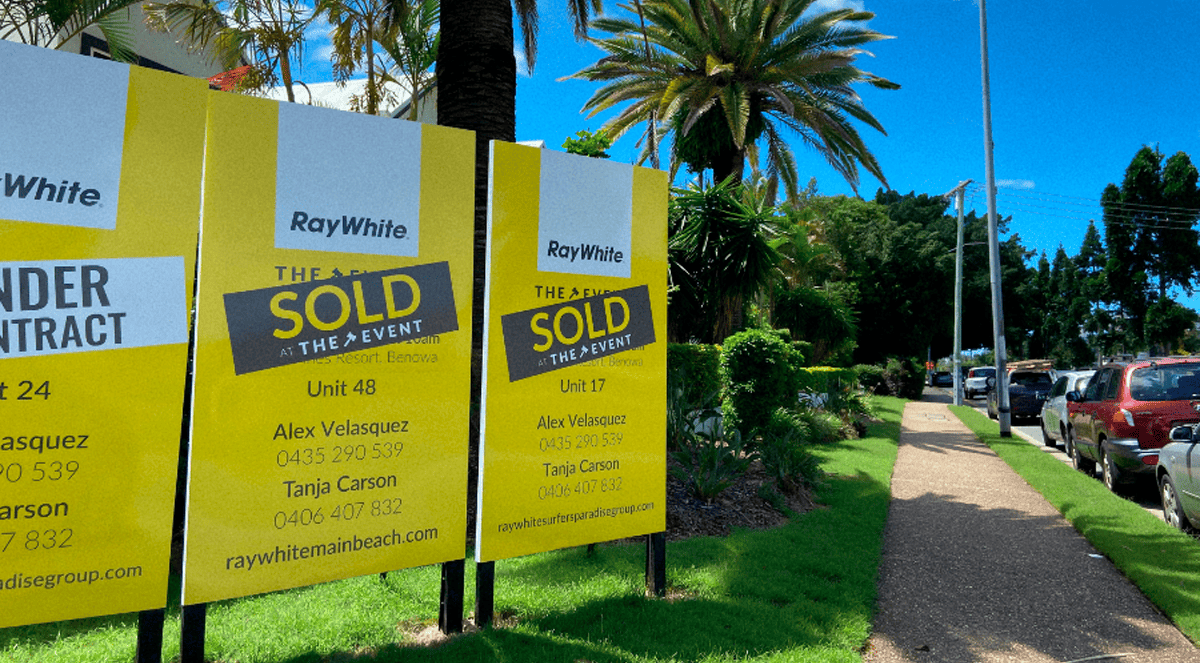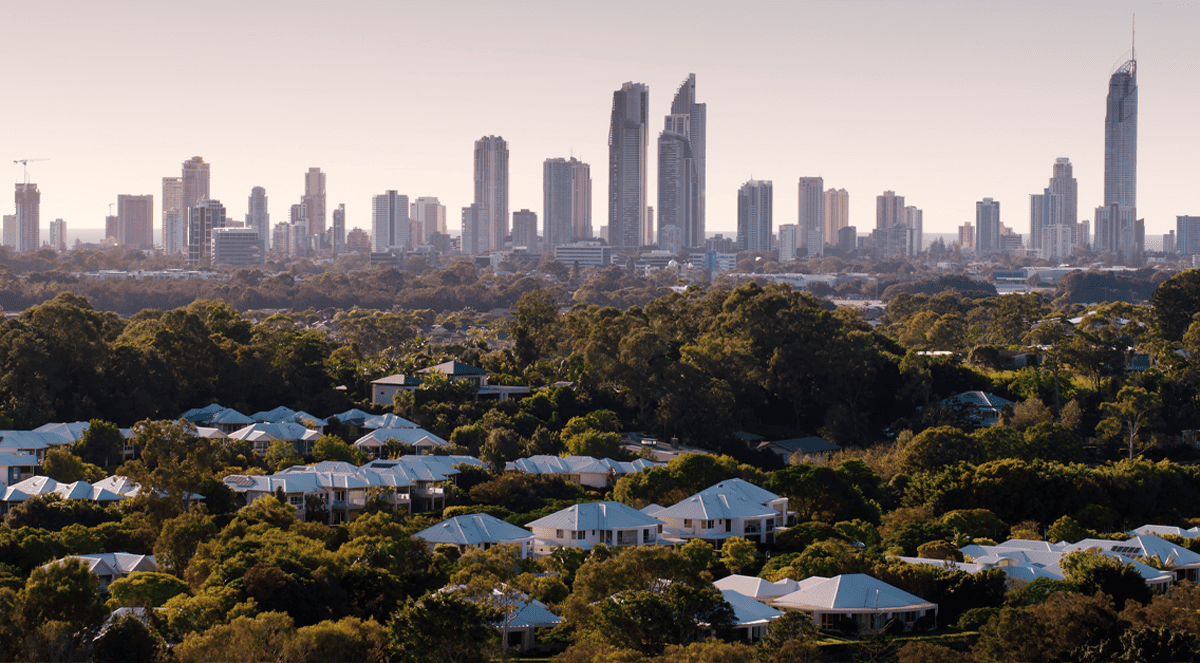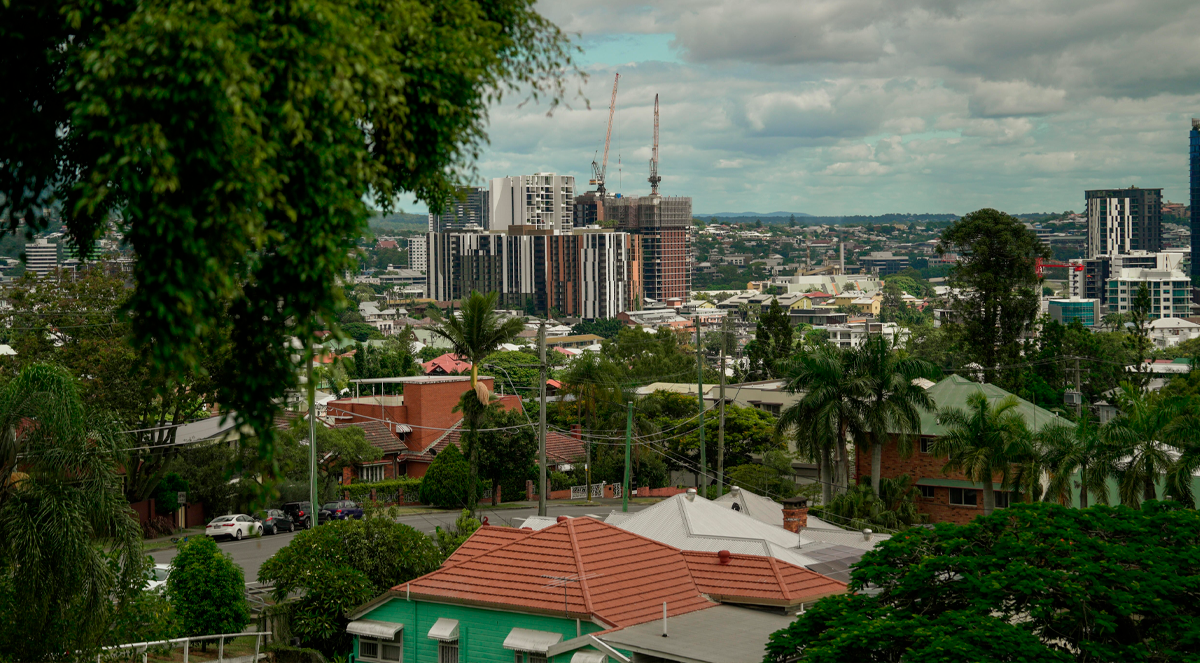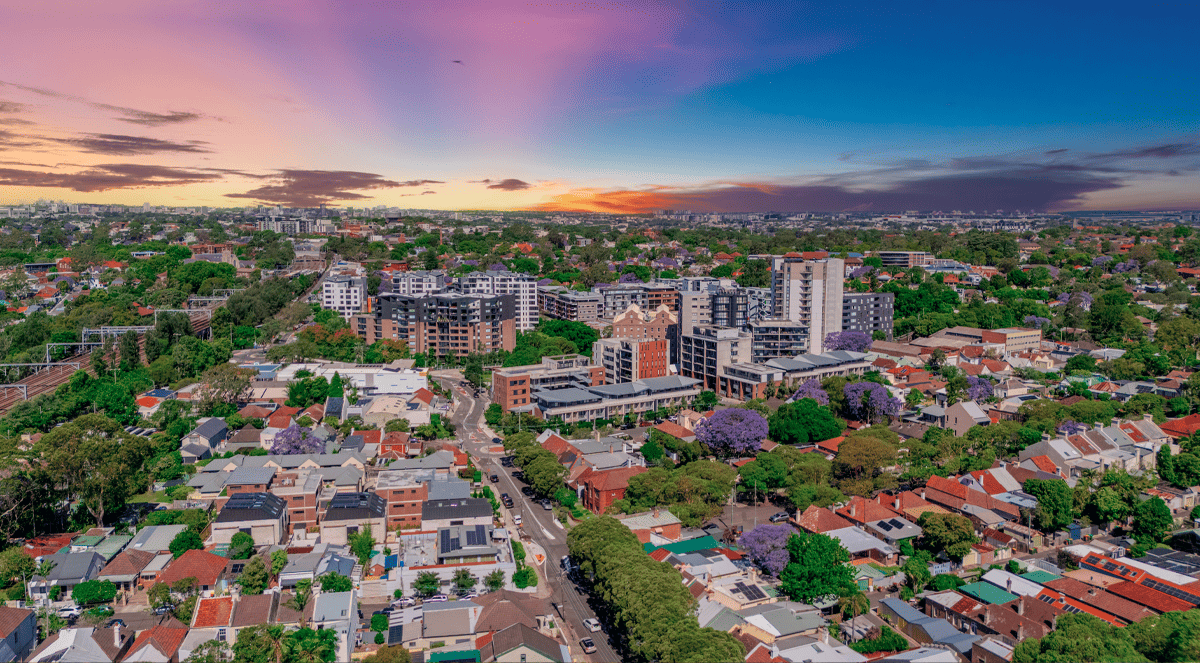Features > Property News & Insights > Market updates
Gloom in Sunshine State as rental crisis worsens
-1.png)
KEY POINTS
- Vacancy rates in Queensland fell to 0.9% statewide in early 2025, indicating extremely tight rental conditions and limited availability for tenants
- The Real Estate Institute of Queensland blames years of housing undersupply, rapid population growth, and inadequate new construction for the rental crisis
- The REIQ says the crisis will only ease when governments cut red tape, invest in infrastructure, and incentivise private development to expand housing supply
Any doubts that Queensland is in the grip of a sustained housing crisis have been dispelled, with new figures showing vacancy rates continue to tighten across most of the Sunshine State.
Data from the Real Estate Institute of Queensland (REIQ) shows the state’s rental market has started 2025 with even fewer options for tenants.
The details
The REIQ’s latest Residential Vacancy Rate Report shows vacancy rates in 24 of the state’s 50 regions tightened during the first three months of 2025.
12 held steady, and just 14 saw any improvement in conditions for tenants seeking a rental property.
The statewide vacancy rate has deteriorated from 1.0% to 0.9% – breaking three straight quarters of steady conditions and, as the REIQ says, “reinforcing the entrenched strain on rental supply.”
As a bit of background, the REIQ classifies rental markets into three categories: tight, healthy, or weak.
These markets are classified according to vacancy rates:
0 - 2.5% = tight
2.6 - 3.5% = healthy
3.6% - plus = weak
“Tight” indicates tough conditions for tenants and usually coincides with periods of rising rents, as landlords can command higher rents.
“Healthy” indicates a ‘balanced’ market, where tenants have a good choice of rental properties, while landlords can still achieve fair market rents.
“Weak” refers to an over-supply of rental properties, and can sometimes see falling rental prices, as landlords offer discounts as incentives to attract a tenant.
Currently, the REIQ says 38 out of 50 Queensland local government areas (LGAs) and subregions are reporting vacancy rates of 1.0% or less.
“The pressure continues to mount in our inner and outer suburban areas – particularly in Brisbane and surrounds, which recorded one of the most notable tightening movements this quarter,” REIQ’s CEO Antonia Mercorella says.
“However, despite these results, property managers are reporting more subdued letting activity, increased days on market, and lessors being more careful with tenant selection.
“This paradox of lower activity, despite a tight market, reflects some fatigue on both sides: many renters are being priced out, stretching too far, or grouping up to rent, while lessors are holding firm on terms and expectations due to rising costs and more onerous legislative requirements,” Ms Mercorella says.
Over the last two years, Queensland has introduced a raft of rental law changes, which include minimum property standards and increased privacy requirements, with the latest tranche of changes coming into effect on the 1st of May.
In Queensland’s heavily populated south-east, the vacancy rate in the huge City of Brisbane local government area fell to 1.0%, with surrounding regions like Pine Rivers, Redcliffe and Moreton Bay now sitting between 0.6% and 0.7%.
The inner suburbs of Brisbane (within a 5 km radius of the CBD) saw a more modest easing to 1.2%, but conditions for tenants remain difficult by historical standards.
At the more extreme end, the REIQ says the Cook area (which takes in Cape York) and Goondiwindi LGA (in the southern Darling Downs) both recorded a 0.0% vacancy rate, meaning virtually no lasting rental availability.
A further 16 regions - including Maryborough, Toowoomba, Caloundra Coast, and the Southern Downs - reported rates at or below 0.5%.
Noosa Shire on the Sunshine Coast saw its vacancy rate rise to 2.0%, the most significant easing in the quarterly rental report.
“However, this is unlikely to offer much comfort to renters, as price points in those areas remain largely out of reach for everyday Queenslanders,” the REIQ says.
“Vacancy doesn’t automatically equate to accessibility.”
The Bay Islands in the south-east and the mining-rich Isaac Shire south of Mackay remained the only regions in Queensland in the REIQ’s ‘healthy’ vacancy rate range, at 2.5% and 3.2% respectively, but as the Institute points out, these areas are the exception, not the rule.
A housing crisis years in the making
Antonia Mercorella says a structural undersupply of housing remains the key driver of the rental crisis.
The REIQ CEO says governments must put policy settings in place to incentivise more private investment and fast-track new housing supply.
“Queensland's stubbornly tight rental conditions are symptomatic of years of underinvestment in housing supply, compounded by rapid population growth,” she says.
“There’s no silver bullet, but the solution lies in one thing: more housing.”
The REIQ says the recent building approvals data released by the ABS revealed that the pipeline of new housing construction in March 2025 was well below the required volume to meet Queensland’s share of the National Housing Accord targets.
“For Queensland to contribute its fair share to the target, the pipeline must include 4,100 new dwellings (approved in the state) each month,” the REIQ says.
“However, in March 2025, there were only 3,116 dwellings approved in seasonally adjusted terms, and there is no sign of an upward trend.
“We continue to see a severe imbalance between supply and demand in Queensland’s rental market, and it is crucial that we focus on addressing the roadblocks that are preventing new housing from coming online,” Antonia Mercorella says.
“Whether it’s investing in enabling infrastructure, land release, or planning reforms, all levels of government must work together to ensure that there are enough properties available to meet demand.”
In one bit of good news, the Real Estate Institute of Queensland says it expects to see greater certainty return to the property market in the next few months.
With the last phase of Queensland’s tenancy legislative changes now in force, the Federal election decided, and further expected cash rate cuts from the Reserve Bank of Australia, the REIQ says these developments should encourage “more long-term decision making from buyers, sellers, and investors.”
However, “until all levels of government focus on cutting red tape, fast-tracking approvals, and removing barriers to private investment, these numbers will not meaningfully improve,” Antonia Mercorella warns.
Stay Up to Date
with the Latest Australian Property News, Insights & Education.




.png?width=292&height=292&name=Copy%20Link%20(1).png)
 SIGN UP FOR FREE NEWSLETTER
SIGN UP FOR FREE NEWSLETTER





.jpg?width=1920&height=1080&name=Warning%2c%20You%20Might%20Be%20Facing%20Higher%20Taxes%20Soon%20(1).jpg)





.png?width=1920&height=1080&name=Rate%20Drops%20Signal%20BIGGEST%20Property%20Boom%20in%20DECADES%20(1).png)

.jpg?width=1920&height=1080&name=Labor%20vs%20Liberal%20These%20Housing%20Policies%20Could%20Change%20the%20Property%20Market%20Forever%20(1).jpg)
.jpg?width=1920&height=1080&name=QLD%20Slashes%20Stamp%20Duty%20Big%20News%20for%20Investors%20%26%20Home%20Buyers%20(1).jpg)
.jpg?width=1920&height=1080&name=Trump%20Just%20Slapped%20Tariffs%20%E2%80%93%20Here%E2%80%99s%20What%20It%20Means%20for%20Australia%20(1).jpg)
.jpg?width=1920&height=1080&name=Federal%20Budget%202025%20More%20Debt%2c%20No%20Housing%20%E2%80%93%20Here%E2%80%99s%20What%20You%20Need%20to%20Know%20(1).jpg)
.jpg?width=1920&height=1080&name=Australias%20Housing%20Crisis%20is%20about%20to%20get%20MUCH%20Worse%20(New%20Data%20Warns).jpg)
%20(1).jpg?width=1920&height=1080&name=Australias%20RENTAL%20CRISIS%20Hits%20ROCK%20BOTTOM!%20(2025%20Update)%20(1).jpg)
%20(1).png?width=1920&height=1080&name=Is%20Adelaide%20Still%20a%20Good%20Property%20Investment%20(2025%20UPDATE)%20(1).png)
.jpg?width=1920&height=1080&name=RBA%20Shocks%20with%20Rate%20Cuts!%20What%E2%80%99s%20Next%20for%20Property%20Investors%20(1).jpg)
%20(1).jpg?width=1920&height=1080&name=I%20Predict%20The%20Feb%20Rate%20Cut%20(My%20Price%20Growth%20Prediction)%20(1).jpg)
.png?width=1920&height=1080&name=Why%20Property%20Prices%20Will%20Rise%20in%202025%20Market%20Predictions%20(1).png)
.jpg?width=1920&height=1080&name=Why%20Investors%20Are%20Choosing%20Apartments%20Over%20Houses%202%20(1).jpg)
.jpg?width=1920&height=1080&name=Why%20Rate%20Cuts%20Will%20Trigger%20A%20Property%20Boom%20(1).jpg)
.jpg?width=1920&height=1080&name=Retire%20On%202Million%20With%20One%20Property%20(Using%20SMSF).jpg)
.jpg?width=1920&height=1080&name=4%20Reasons%20Why%20You%20Should%20Invest%20in%20Melbourne%20Now%20(1).jpg)
%20(1).jpg?width=1920&height=1080&name=Old%20Property%20vs%20New%20Property%20(Facts%20and%20Figures%20Revealed)%20(1).jpg)
%20(1).jpg?width=1920&height=1080&name=Will%20The%20New%20QLD%20Govt%20Create%20a%20Property%20Boom%20or%20Bust%20(My%20Prediction)%20(1).jpg)
%20Scott%20Kuru%20(1).jpg?width=1920&height=1080&name=Inflation%20Hits%20Three-Year%20Low%20(Will%20RBA%20Cut%20Rates%20Soon)%20Scott%20Kuru%20(1).jpg)
.jpg?width=1920&height=1080&name=How%20to%20Buy%20Investment%20Property%20Through%20SMSF_%20The%20Ultimate%20Guide%20(1).jpg)
.jpg?width=1920&height=1080&name=Victoria%20Slashes%20Stamp%20Duty%20Melbourne%20Set%20to%20Boom%20Scott%20Kuru%20(1).jpg)
.png?width=1571&height=861&name=Are%20Foreign%20Buyers%20Really%20Driving%20Up%20Australian%20Property%20Prices%20(1).png)
.jpg?width=1920&height=1080&name=The%20Single%20Factor%20That%20Predicts%20Property%20Growth%20Regions%20(1).jpg)
%20Scott%20Kuru%20(1).jpg?width=1920&height=1080&name=My%20Prediction%20On%20Rates%20%26%20Negative%20Gearing%20(Market%20Crash)%20Scott%20Kuru%20(1).jpg)

-1.png?width=1920&height=1080&name=Major%20Banks%20Cut%20Rates%20Will%20RBA%20Follow%20Suit%20(Sept%20Rate%20Update)-1.png)
%20Scott%20Kuru-1.png?width=1920&height=1080&name=Rate%20Cut%20Coming%20What%20New%20Zealands%20Move%20Means%20for%20Australia%20(Sept%20Prediction)%20Scott%20Kuru-1.png)
%20(1).jpg?width=1920&height=1080&name=Buy%20when%20the%20interest%20rates%20are%20high!%20(Why%20you%20must%20buy%20now!)%20(1).jpg)
.jpg?width=1920&height=1080&name=Carms_Revised%20Taxes%20Due%20Aug%209%20YT%20Thumbnail02%20(1).jpg)
.jpg?width=1920&height=1080&name=Carms_Too%20Little%20Too%20Late%20Aug%207%20YT%20Thumbnail01%20(1).jpg)









.jpg?width=1920&height=1080&name=Carms_Rate%20Drop%20In%20July%20Jun%2010%20YT%20Thumbnail02%20(1).jpg)
.jpg?width=1920&height=1080&name=Carms_Own%20a%20Property%20V6%20Jun%205_YT%20Thumbnail%20(1).jpg)









.png?width=1920&height=1080&name=Artboard%201%20(3).png)






.jpg?width=1920&height=1080&name=YT%20thumbnail%20%20(1).jpg)

